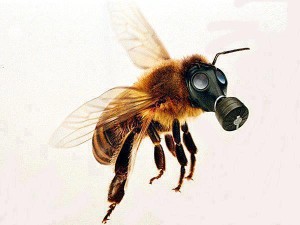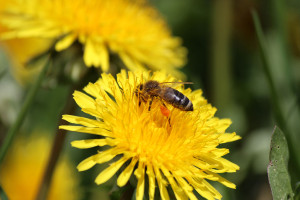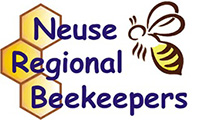You don’t have to be a beekeeper to help honey bees and native pollinators. You can simply change a few habits around your yard. A well manicured lawn of rich green grass, beauty bark, and a few flowers may look nice to you, but from a bee’s perspective it is a desert with little food or nutrition.
Help Bees
Create An Oasis
As you plan your garden, try creating a better habitat for bees and native pollinators. You’ll have healthier plants and more fruits and vegetables.
Make your lawn an oasis for bees:
- Add more native plants that thrive in our area. Native plants will be more hardy and require less maintenance.
- Plant more fruits, vegetables, and herbs. In addition to giving you food, they provide pollen and nectar.
- Diversify your plants to bloom at different times of the year. Provide a source of nectar and pollen all season long.
Manage Pesticide Use
 It may be hard if not impossible to completely avoid pesticides. There are some pests that do quite a bit of damage to our gardens. But we can be smarter about how we use pesticides.
It may be hard if not impossible to completely avoid pesticides. There are some pests that do quite a bit of damage to our gardens. But we can be smarter about how we use pesticides.
- Avoid “broad spectrum” pesticides. These will indiscriminately kill everything they come into contact with.
- Use targeted pesticides. If you feel you absolutely have to use a pesticide, use one the selectively focuses on your specific problem you are trying to solve.
- Apply pesticides wisely. It’s best to apply them in the early morning or late evening when bees and other beneficial insects are not active so they can avoid getting hit with direct exposure.
- Use natural predators. The best way to eliminate pests is to encourage or introduce natural predators. One example is the lady bug that will eat aphids, mites, white flies, and scale insects.
Go for balance in your garden. A healthy garden will have an entire ecosystem of critters that keep things under control.
Honeybees Need Weeds
 Honeybees live all year round. They do not hibernate. When the weather is bad or flowers aren’t blooming, they live inside the hive eating stored food (honey for carbohydrates and pollen for protein).
Honeybees live all year round. They do not hibernate. When the weather is bad or flowers aren’t blooming, they live inside the hive eating stored food (honey for carbohydrates and pollen for protein).
A colony needs about 45 pounds of stored honey to live from November to March in Eastern North Carolina. To store that much food, in addition to the hundreds of pounds of honey they eat all year long, bees need to find high quality nectar and pollen sources from March to October when most flowers are blooming. Weeds and natural habitats are extremely important sources of food for bees. Bees will travel, on average, 2-3 miles from their hive in search of nectar and pollen.
When controlling plants that you consider to be “weeds”, please consider hand removal before spraying.
Many sprays may be listed as safe for bees. However, research has shown that herbicide and pesticide residues build up in the wax of honeycomb and can become toxic to a colony within three to five years. Those chemicals drift to the hive during application and also are brought to the hive when bees visit plants and flowers that have been sprayed.
If you spray to remove plants:
- Read all instructions carefully.
- Use the lowest dosage and least amount of chemical needed. Do not over spray.
- Do not apply sprays when flowers are in bloom.
- Spray early in the morning or late in the evening when there is less wind.
- If the plants you remove are an important food for bees, please consider replacing that food source.
